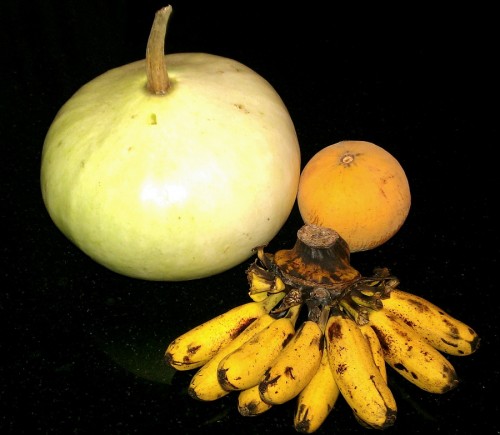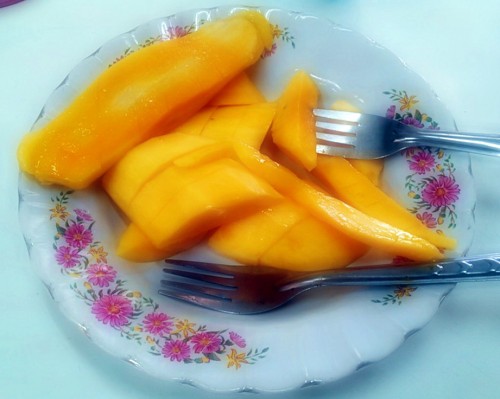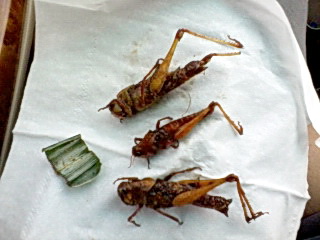Pictured above from the upper left: An unknown Thai melon, a katon (aka kraton, kraton priya, krathon wild mangosteen, santol, or sandorica. Scientific names: Sandoricum koetjape, Sandoricum indicum, Sandoricum nervosum or Melia koetjape. Family Meliaceae, Order Sapindales. Source.) somebody at work gave me, and an unknown species of banana that were selling for 20 baht/bunch at a local market.
The bananas were good but not exceptional, the katon got spoiled before I could eat it (I never seem to get sweet ones; people around here tend to eat it in a savory/spicy fruit salad), and I did what we do with all unknown melons* – tried a bit to see if it was a sweet variety. When it proved to be a non-sweet variety, we used half for pork rib soup and half in a red curry. It was the bomb!




